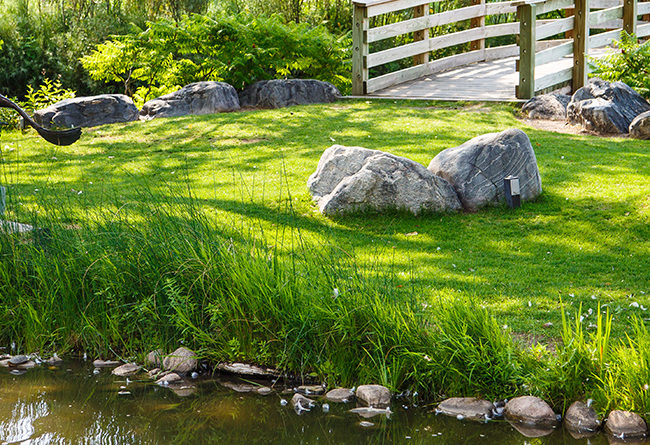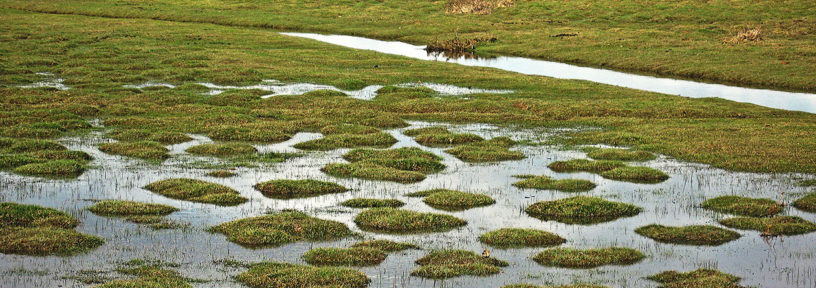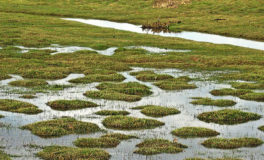Repairing a flood-damaged lawn – What to do when your lawn gets waterlogged?
Those of us unlucky enough to have faced storms recently now face the prospect of repairing a flood damaged lawn. But, putting the damage right depends on how long your lawn was waterlogged and just how much water the grass was under.
What does waterlogging do to plants?
The good news is that during winter, our gardens are far more tolerant of very wet conditions. Grass plants can survive being underwater for longer than when they are growing faster in summer. Water on a lawn will still pose problems at any time of year, because water sitting on the surface will create compaction. Waterlogged lawns means roots will be starved of air drowning the plant and killing the turf.
Finally, wet lawns can encourage the growth of unsightly lichens and liverwort. If allowed to grow they can cover parts of the lawn, killing the turf.
How soon can I start repairing my lawn?
It is important not to begin regenerating the lawn until the water has drained away. Walking on a waterlogged lawn will cause further compaction and just add to the problem.
If most of the lawn is dry but for one or two small wet areas, sweep away the water in patches from the better-draining parts of the garden. Unfortunately, if the grass has been underwater for over a week, it is likely it will need to be reseeded or replaced.
Step by step guide to repairing a flooded lawn
1. Repairing a flood damaged lawn – give the roots some air
First, to recover the lawn , aerate it and improve the drainage. For small lawns, this can be done with a manually operated hollow tine aerator. It will make small holes all over the garden, the deeper the better, up to about six inches. You can buy these tools online for under £20 and they’re well worth the investment.

Then with larger lawns, it is easier to use a powered hollow-tine aerator if you can obtain one. The machine will leave the plugs of soil on the lawn’s surface which should be removed. Most machinery hire shops have them in store for a reasonable price. The resulting holes in the lawn should be filled with sand or topdressing soil which will improve the drainage.
2. Repairing a flood damaged lawn – give the plants a boost
Then the next step is to feed the lawn with a spring fertiliser once it begins to grow again as the temperature improves. By this time, it will be clear whether any areas of the lawn have been killed by the flooding and whether these areas will need to be reseeded or replaced.
Avoiding flood damage
As always, prevention is better than cure. Topdressing and aeration can improve your lawn’s drainage and prevent flooding in the first place. Keeping your lawn healthy and feeding it in spring and autumn will also mean it can survive longer in floods. If you have very heavy clay soil, it may be best to replace the lawn rather than recovering the lawn only for it to flood again.
Laying a new lawn on top of several inches of sand and loam topsoil could solve the problem – though in extreme cases, it may be necessary to install drainage.

 How to cope with a waterlogged lawn
How to cope with a waterlogged lawn 

